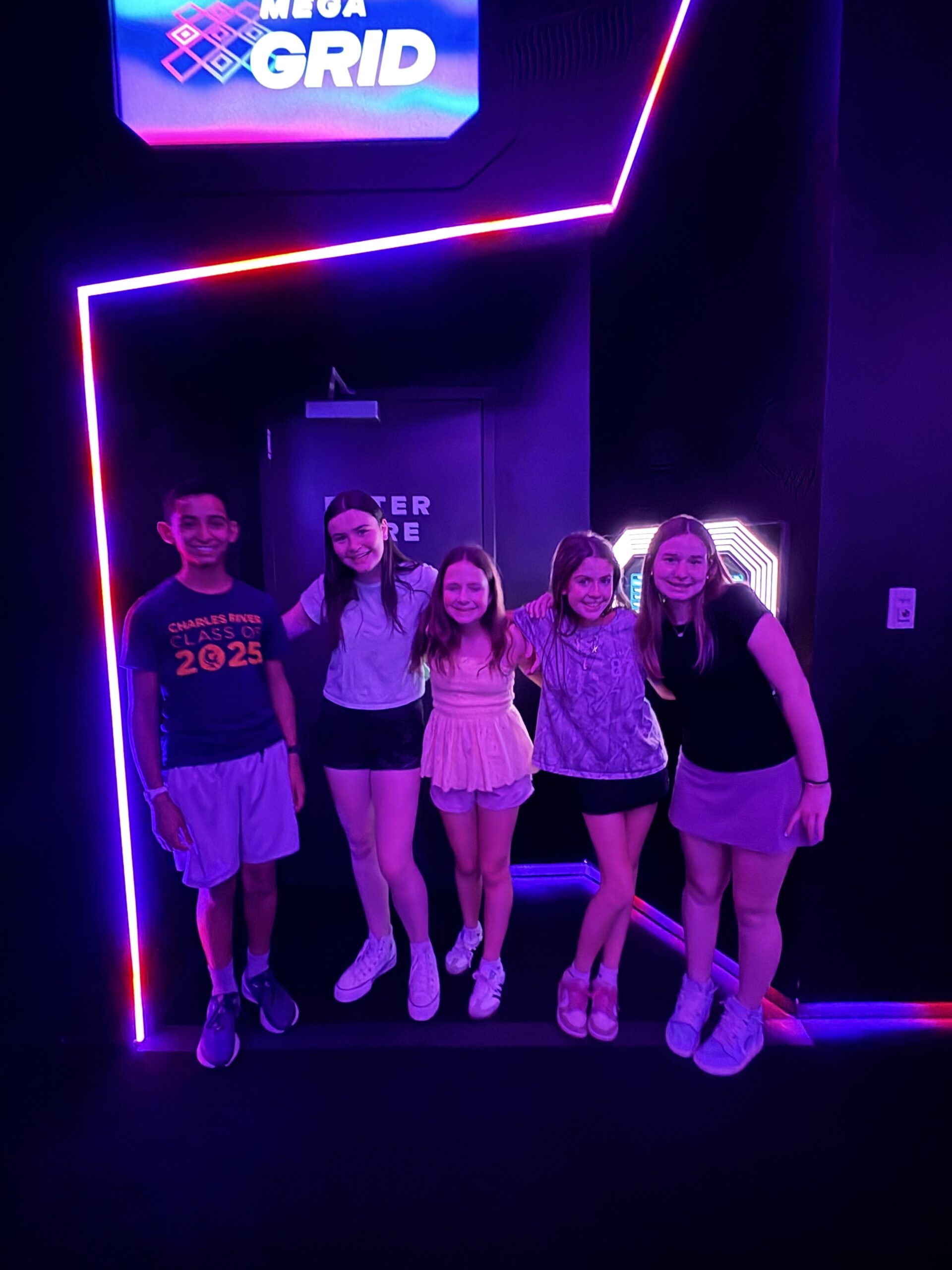

At CRS, it is really important for our oldest students to learn about the hard parts of history, not just the triumphs.

On the third day of our trip, we did just that. Students spent the morning at The Legacy Museum. The museum is founded by Montgomery’s Equal Justice Initiative. EJI is a nonprofit organization committed to ending mass incarceration and excessive punishment in the United States, to challenging racial and economic injustice, and to protecting basic human rights for the most vulnerable people in American society.
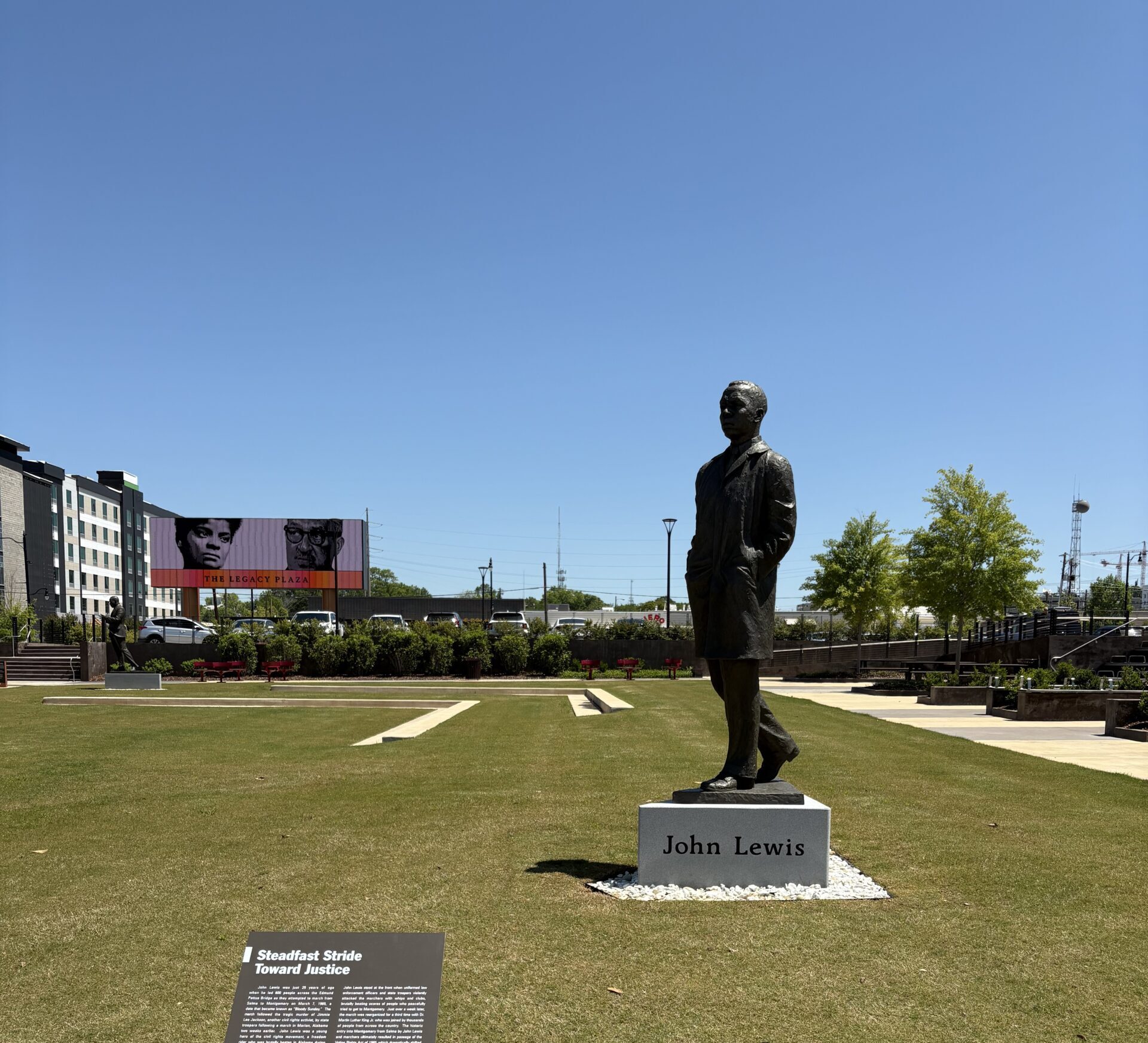
Students viewed the exhibit “From Enslavement to Mass Incarceration” which featured photos, written anecdotes, artwork, documentaries, and testimonials from currently incarcerated people. We were not allowed to take photos inside.
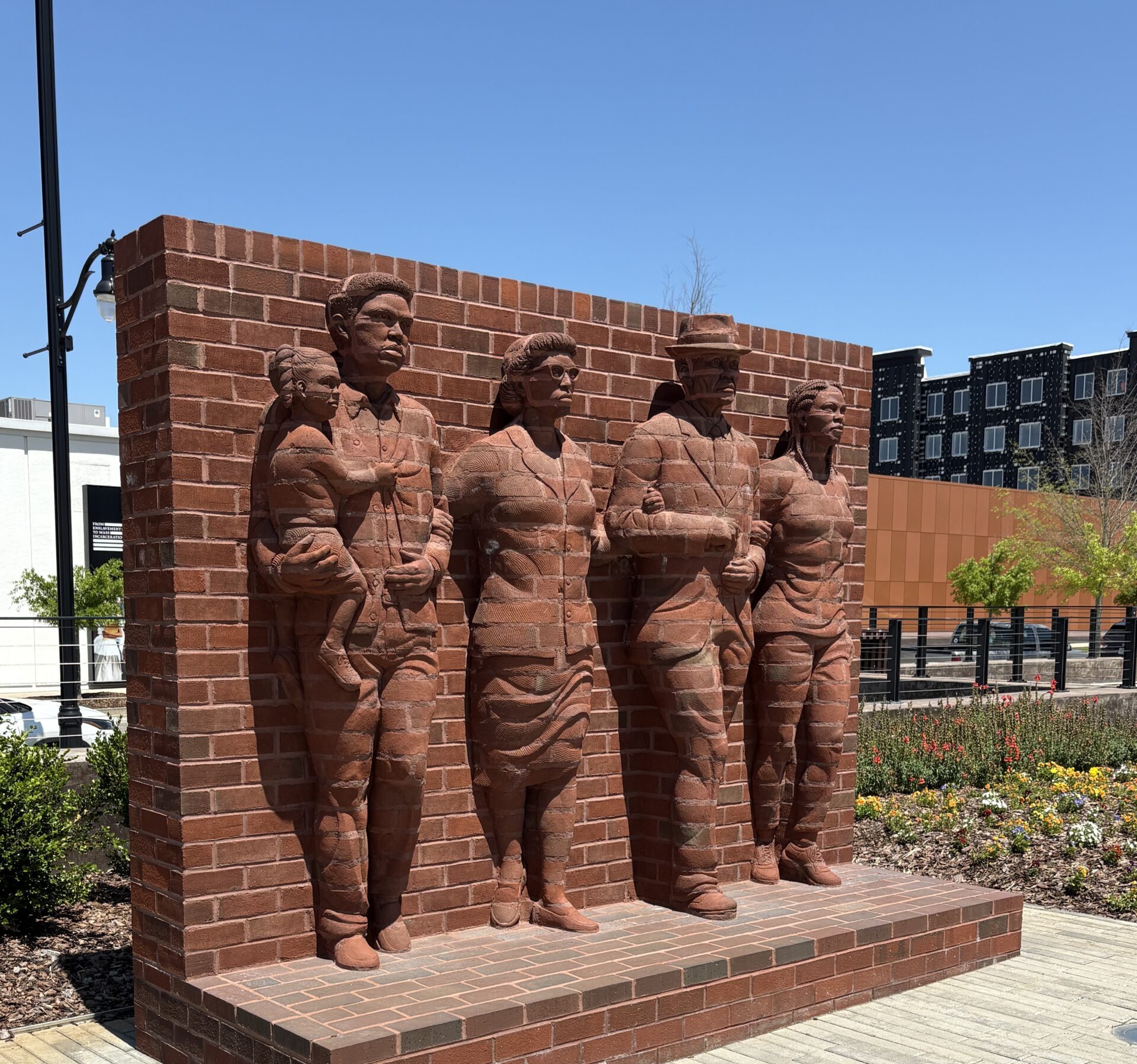
The exhibit took an in-depth look at the North and South’s role in enslavement and deeply drove home the understanding that the nation’s wealth and infrastructure was built through enslavement and is continued through oppression and incarceration strategies.

Students spent time reflecting on prompts including:
What were your initial reactions to the Legacy Museum? How did it make you feel?
How did the museum connect the history of slavery to the present-day reality of mass incarceration? What did you learn about this connection?
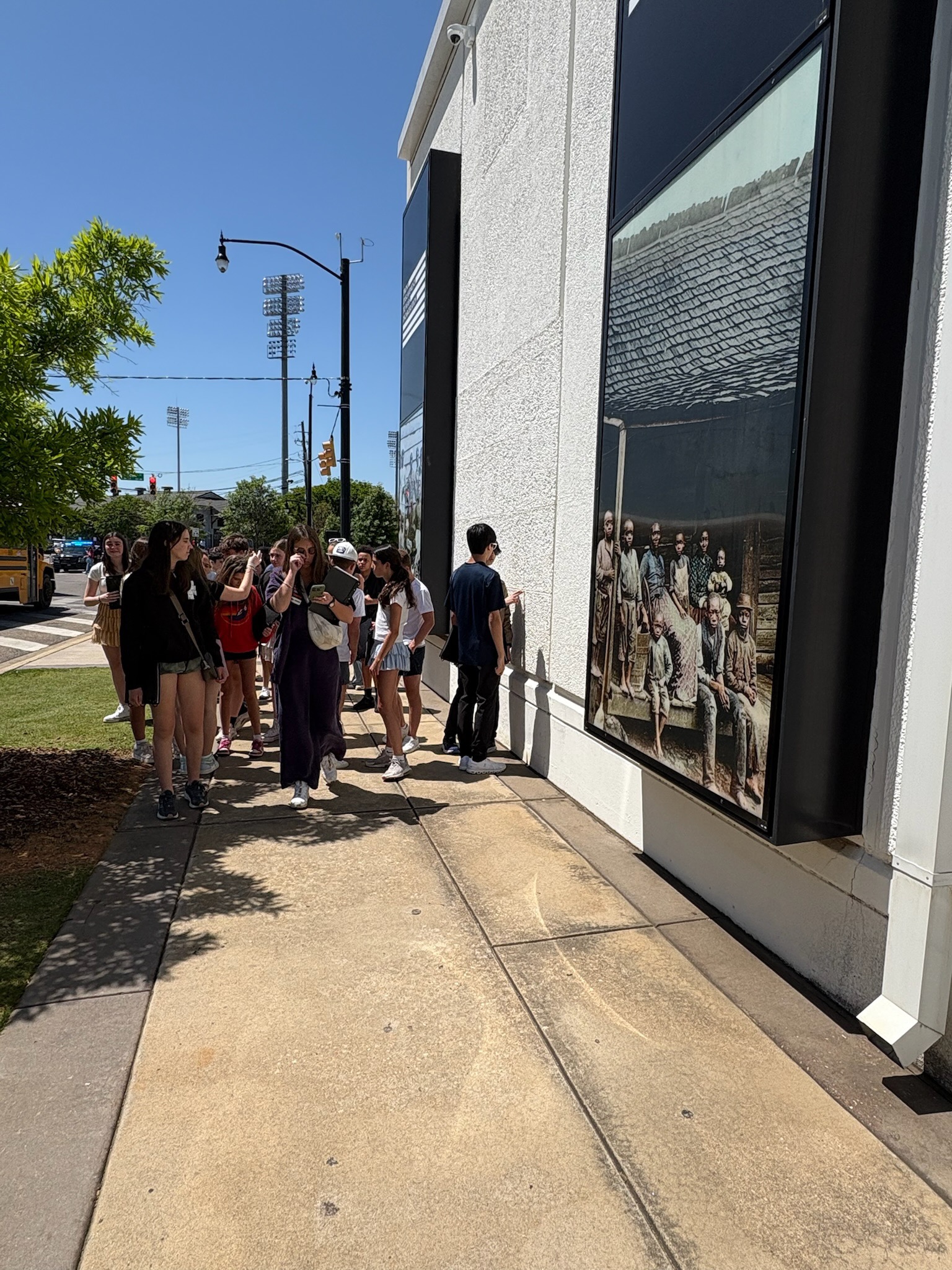
And:
How does the history you learned about today relate to current events and issues in our society?
What responsibilities do we have as individuals and as a society to address the legacies of slavery and racial violence?
What actions can we take to promote justice and healing?

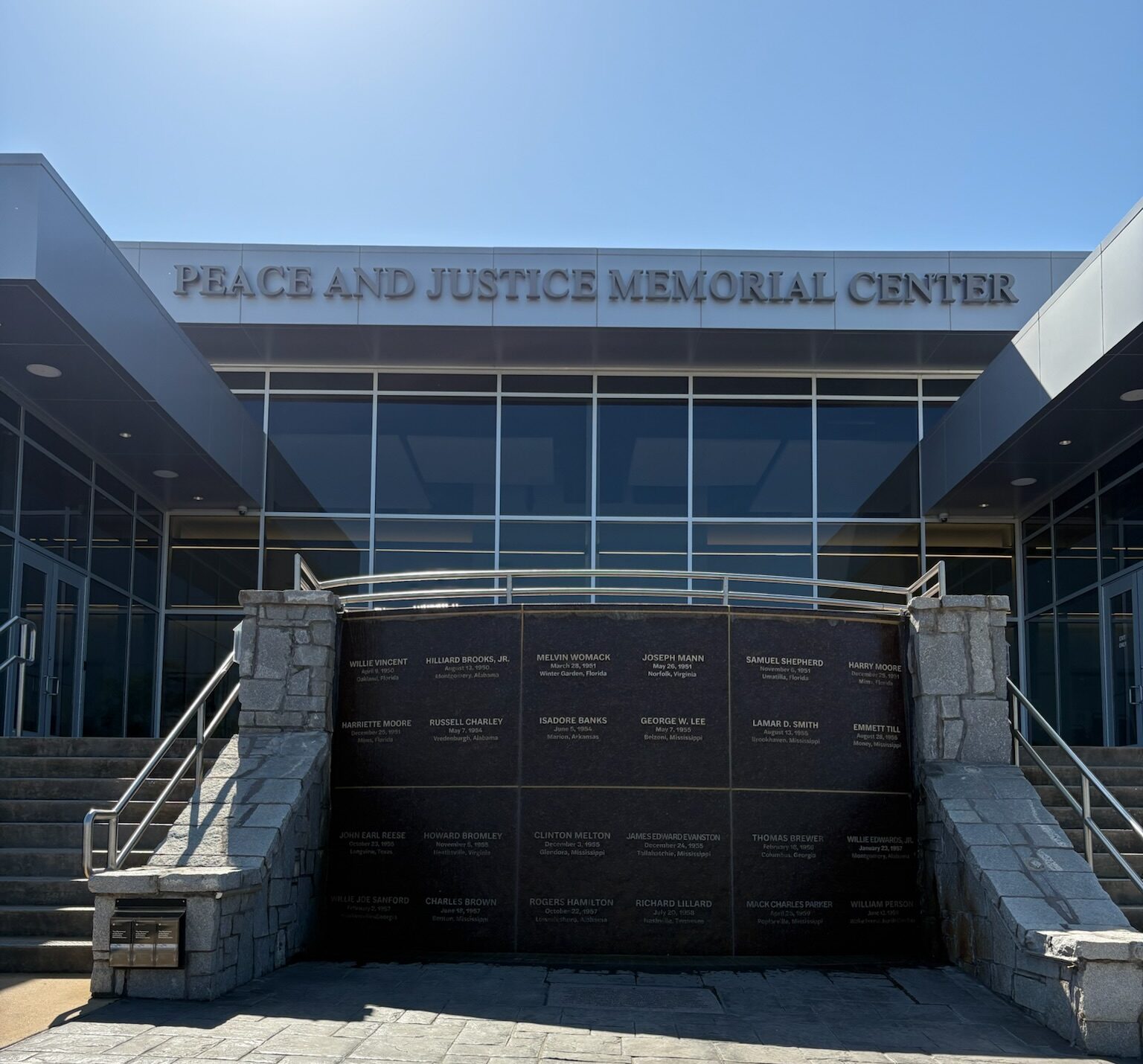
Next, we visited The National Memorial for Peace and Justice, dedicated to the Black victims of lynching in America in the post-Reconstruction era and the racial terrorism these lynchings intended to cause.
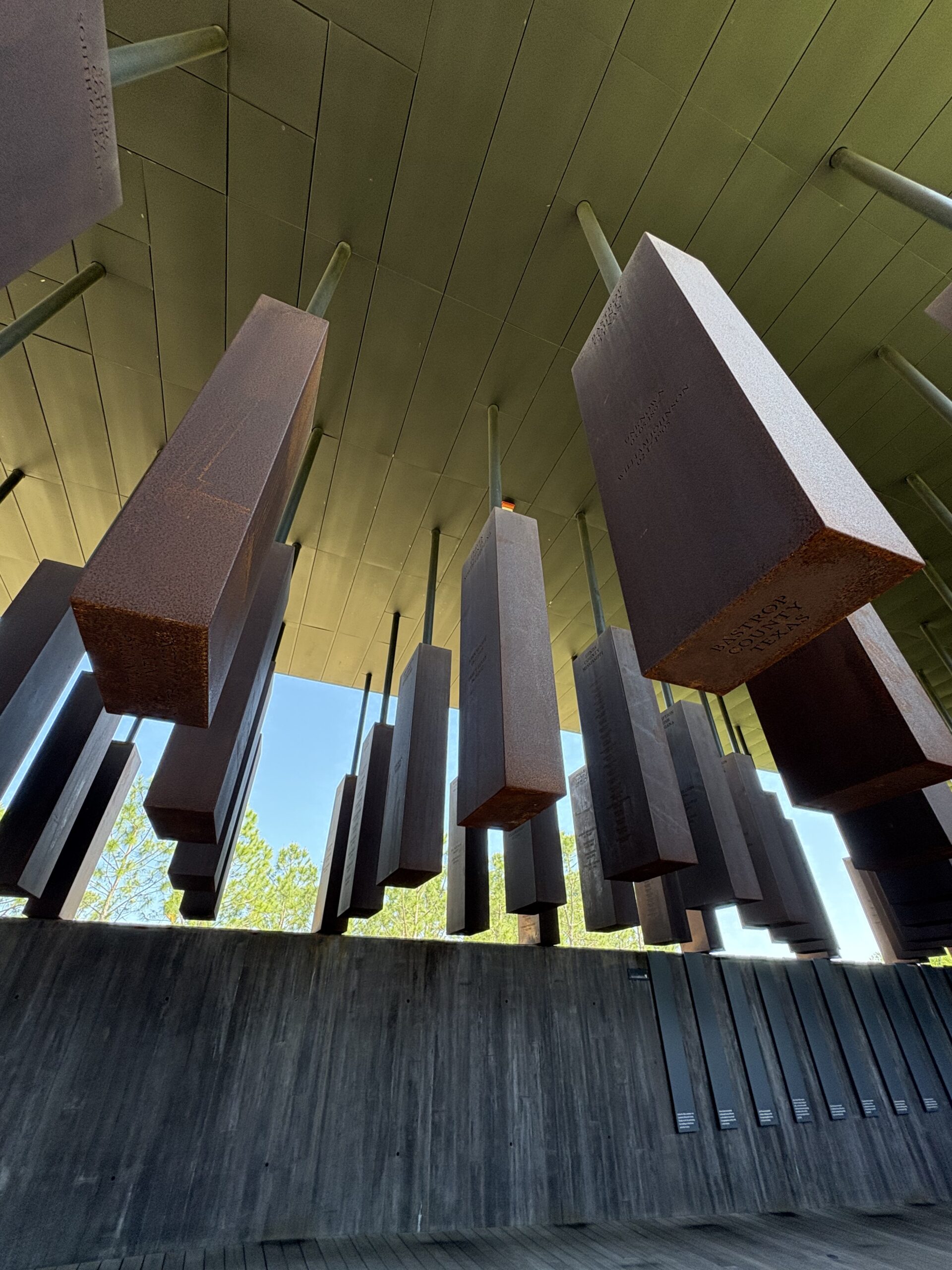
Strikingly, the memorial reminded visitors that most of these lynchings were unacknowledged by the communities in which they occurred, and the perpetrators were never brought to justice. The hanging slabs represent the 805 counties where over 4000 Black Americans were killed in racial terror lynchings between 1877 – 1950.
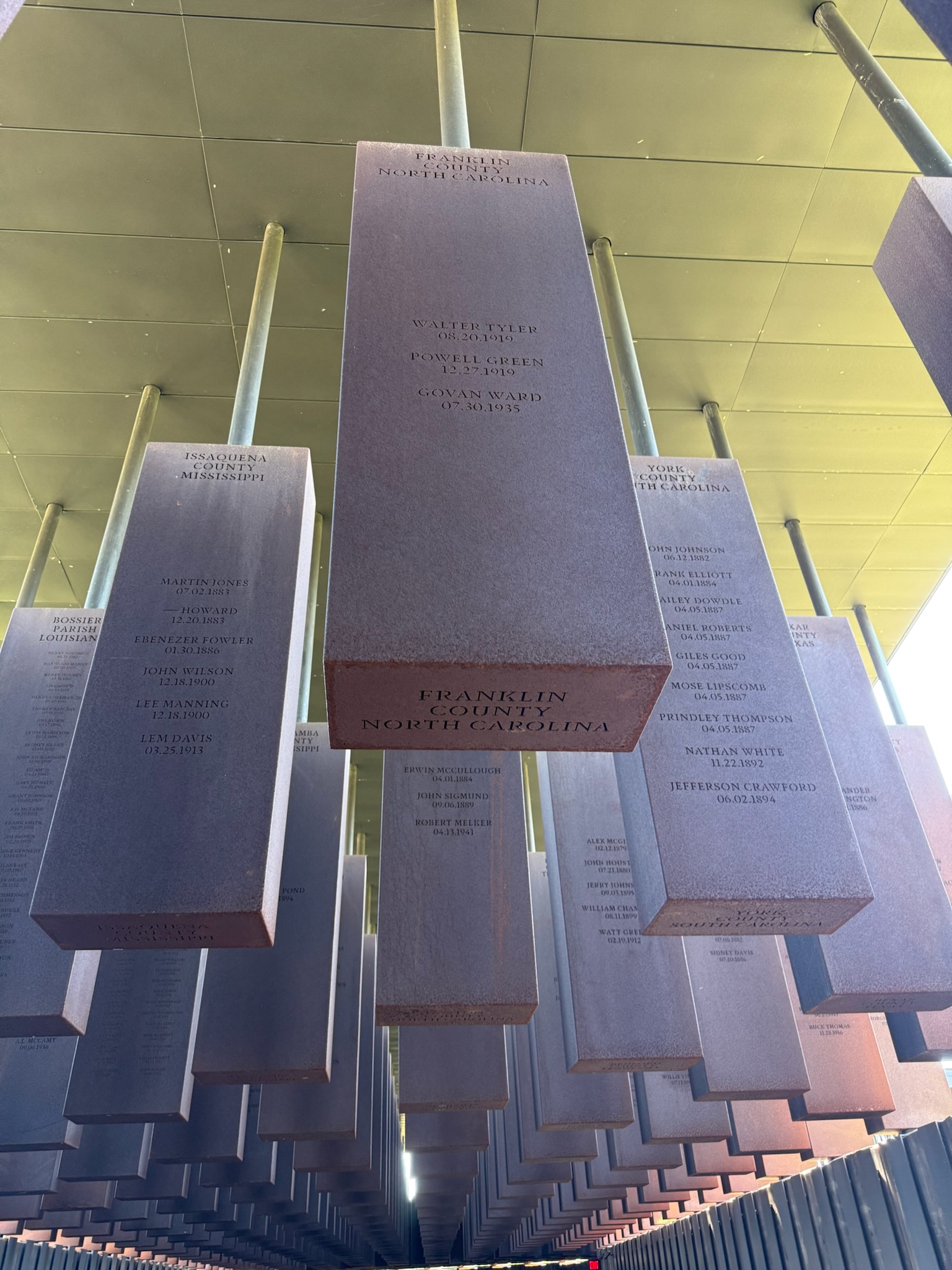
The lynchings were distinct from hangings and mob violence committed against white people and other groups because they were intended to terrorize Black Americans and enforce racial hierarchy.
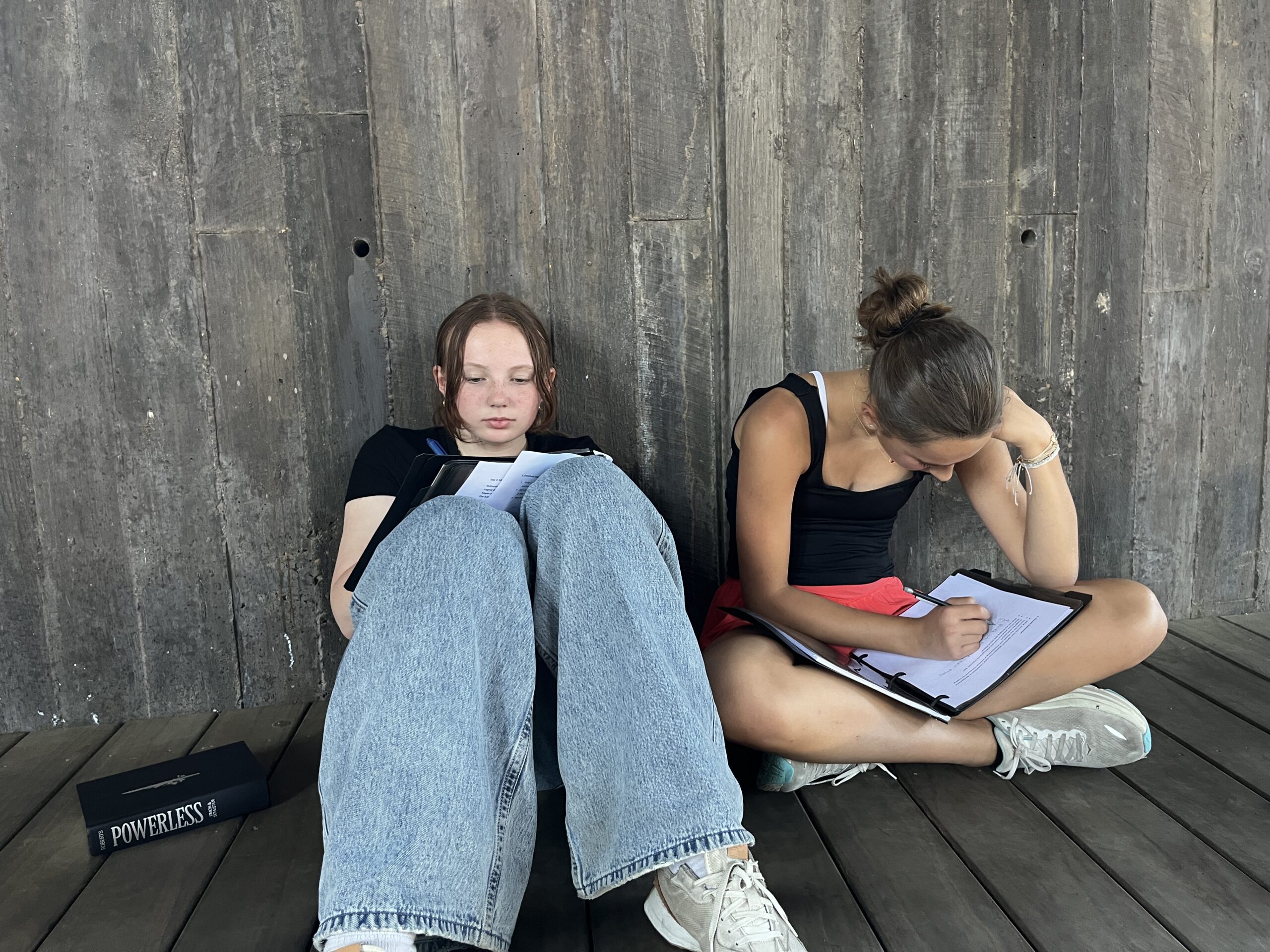
Students had the opportunity for quiet reflection, journaling, and discussion while at the memorial.
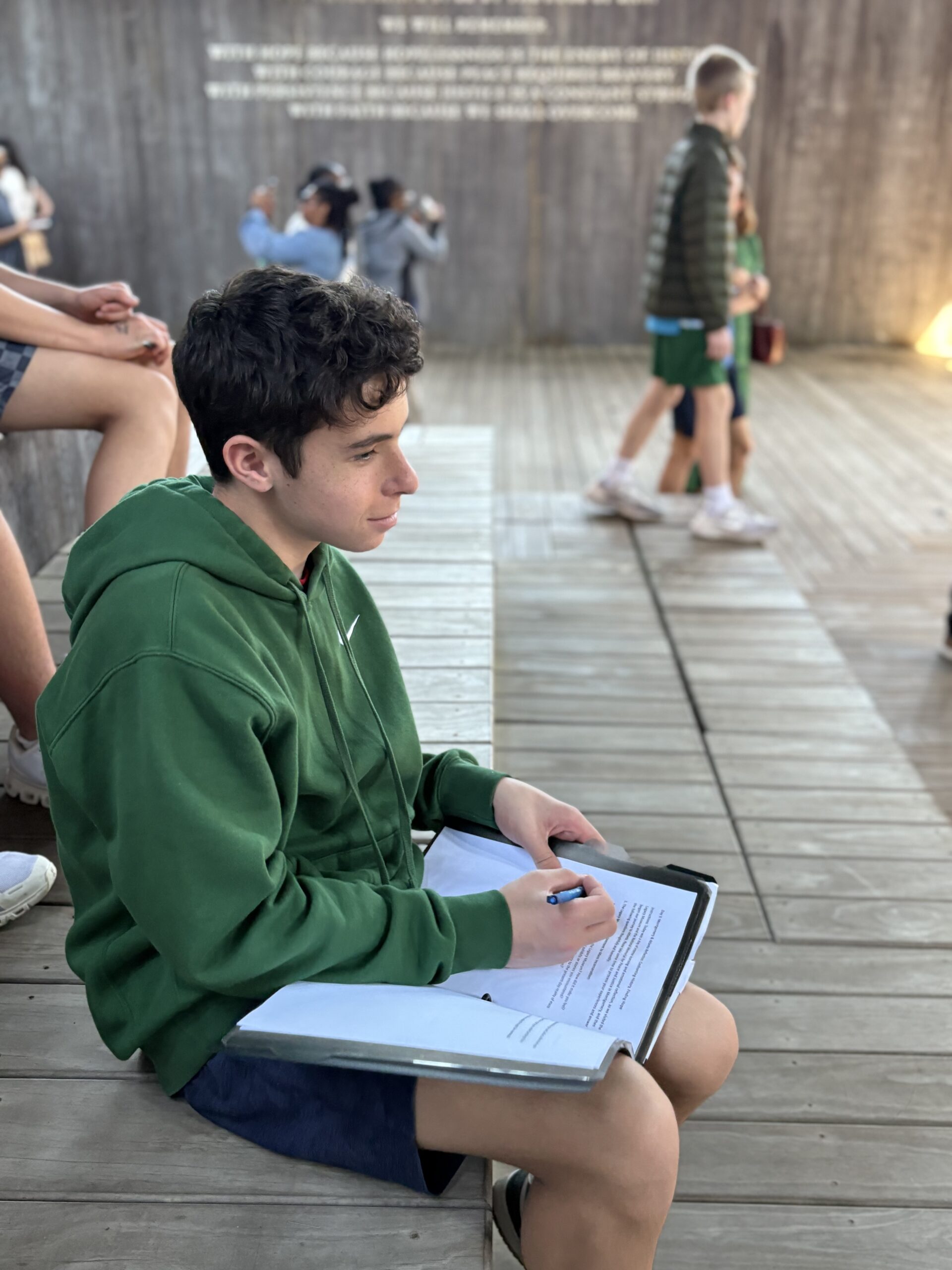
Members of the Class of 2025 shared about the importance of learning this difficult history, and they also thought deeply about the memorial’s construction — the intentional choices that went into its creation.
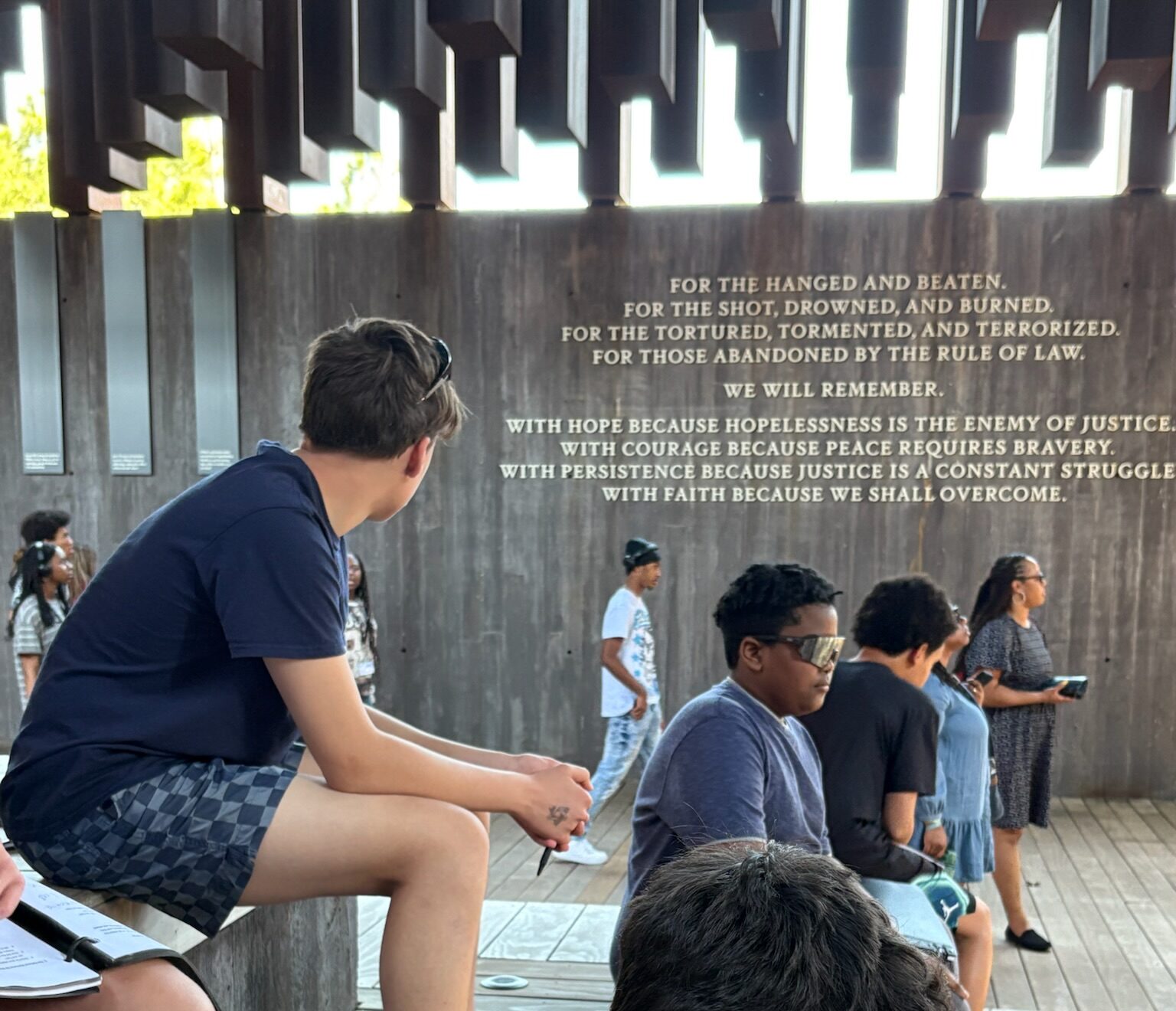
One student reflected: “The memorial was very peaceful, but none of these people had a peaceful death. They deserve a peaceful way to be remembered.”
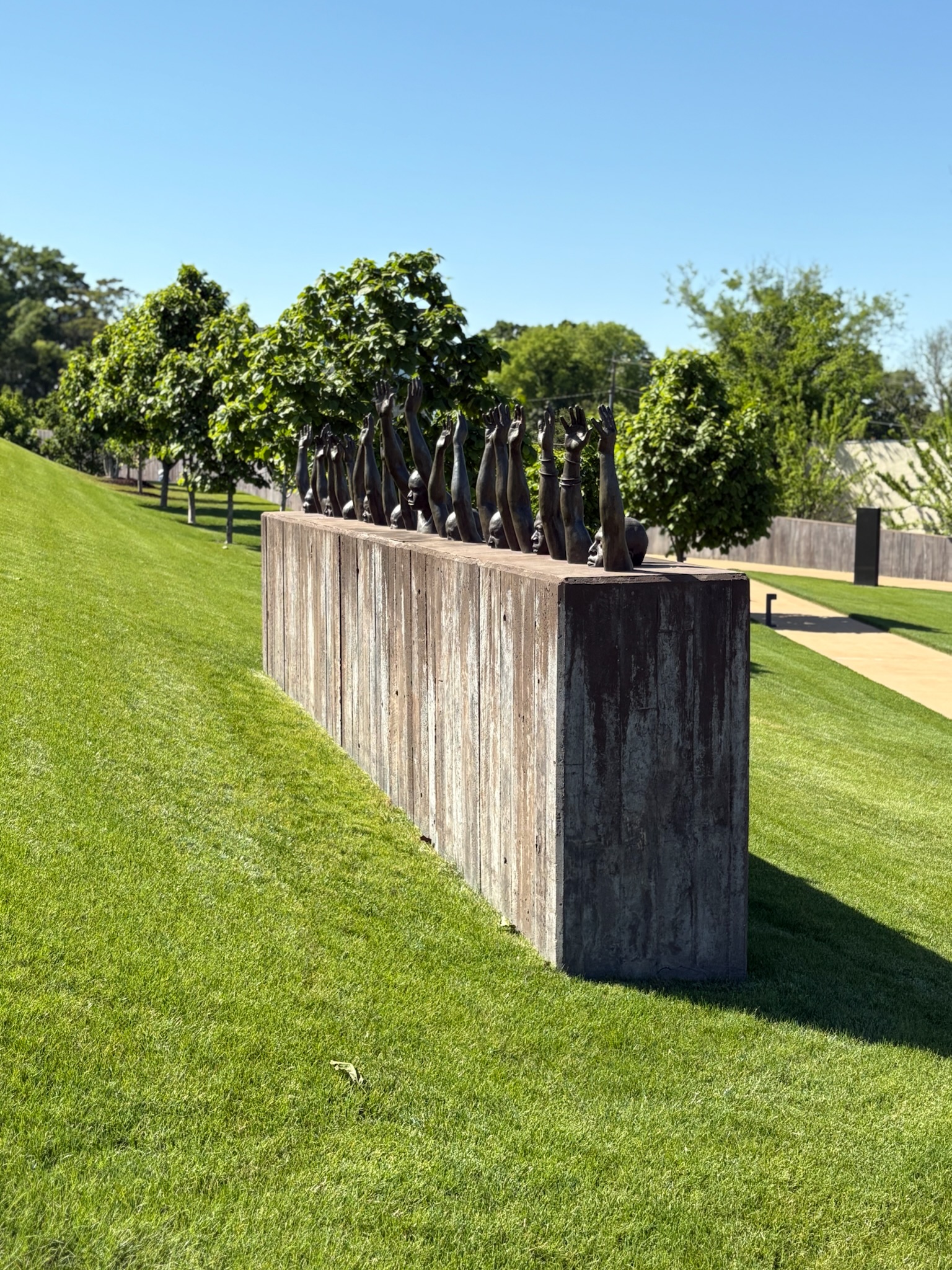
Additionally, eighth graders compared the National Memorial for Peace and Justice to the Legacy Museum they saw earlier in the day. Both were impactful, but the students noted that the designers and planners made very different choices.
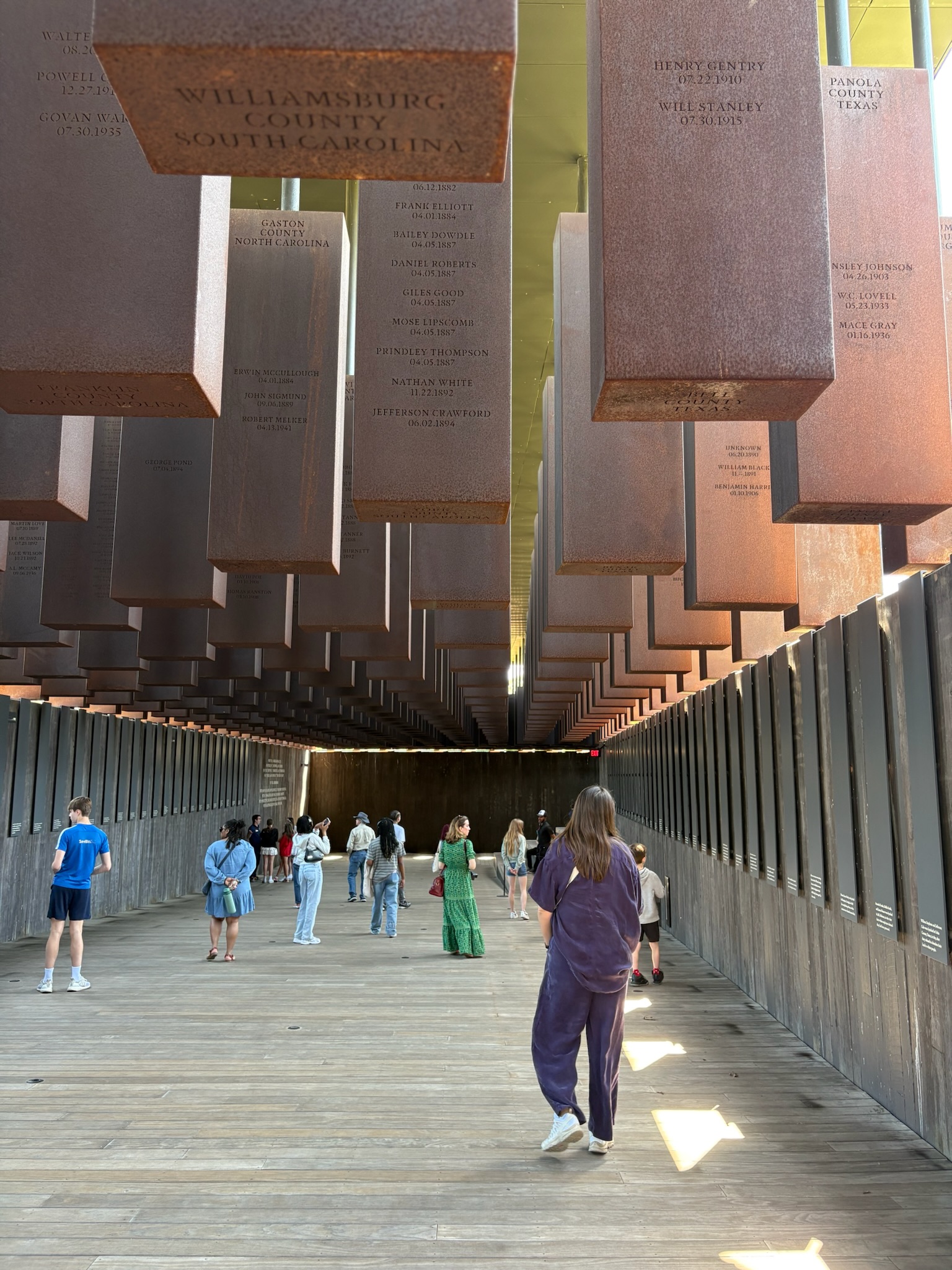
One eighth grader shared that the memorial’s “simplicity makes it more effective in conveying the message about the injustice of just how many people were killed by lynching.” She went on to say, “I feel like the museum is for the living, but the memorial is for the dead.”
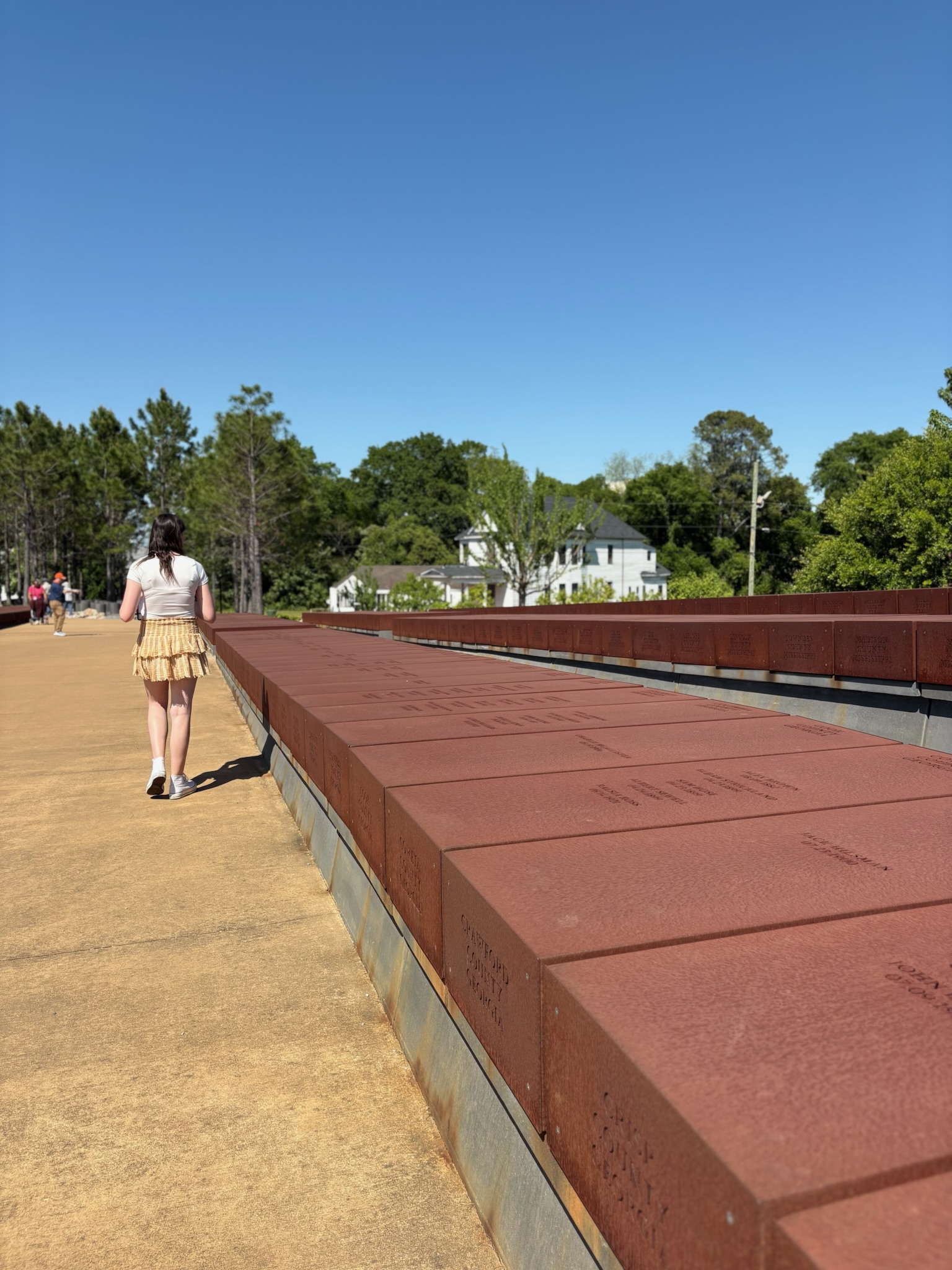
The Community Remembrance Project at the memorial site is dedicated to helping communities learn about the lynchings that occurred there and memorialize the victims with replicas of the hanging steel memorial slabs, designed to look like coffins. Outside of the memorial square, we saw the replica steel memorial slabs that counties have been invited to take from the memorial. It was striking to see empty spaces, but even more striking to see how many remained.
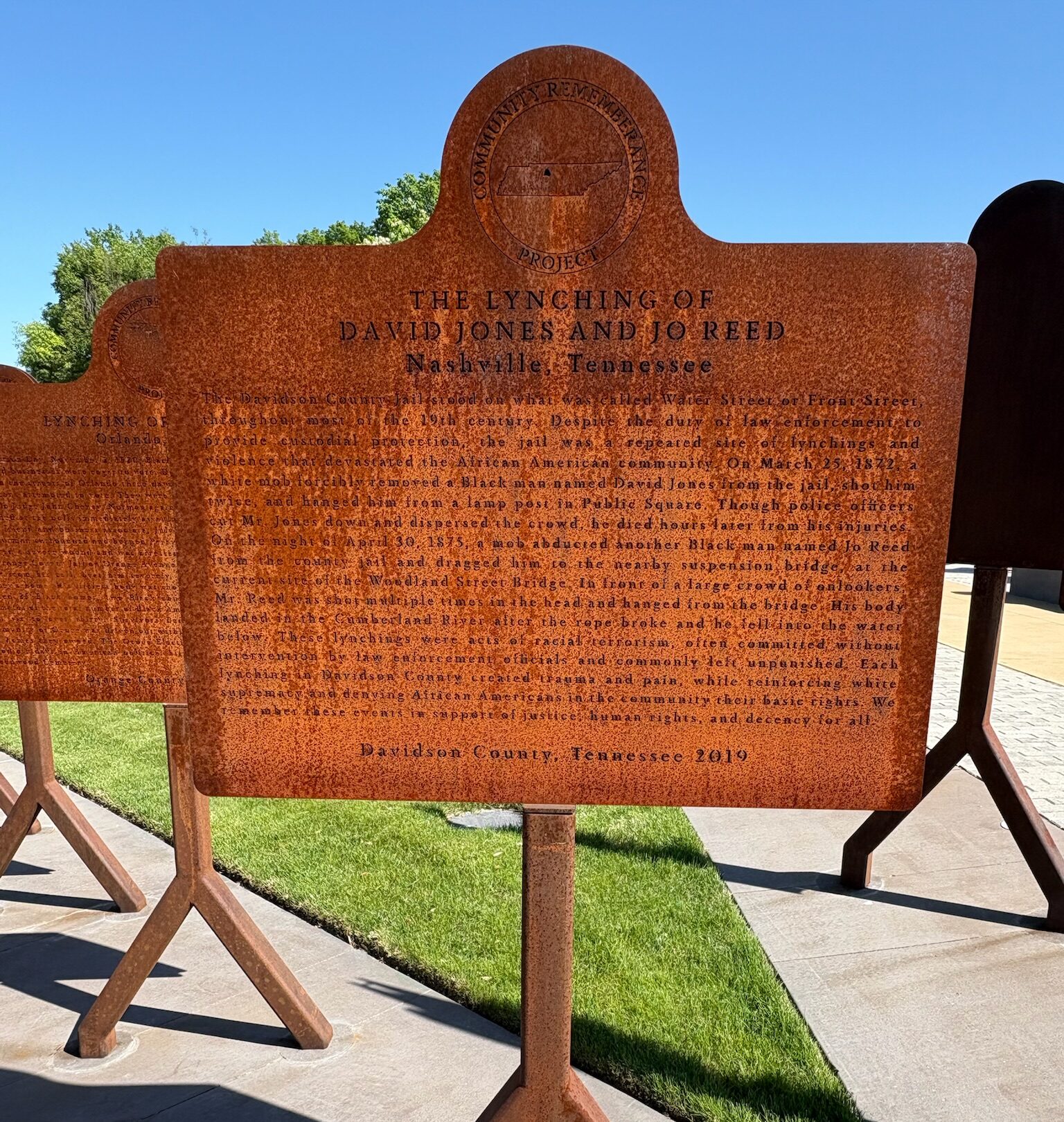
In the spirit of “truth-telling,” the Historical Marker Project helps communities install narrated markers of where lynchings occurred and who the victims were. We walked through examples of these markers from across the country that honored the communities who have reckoned with the history of lynching and racial terror and chosen to install the markers.
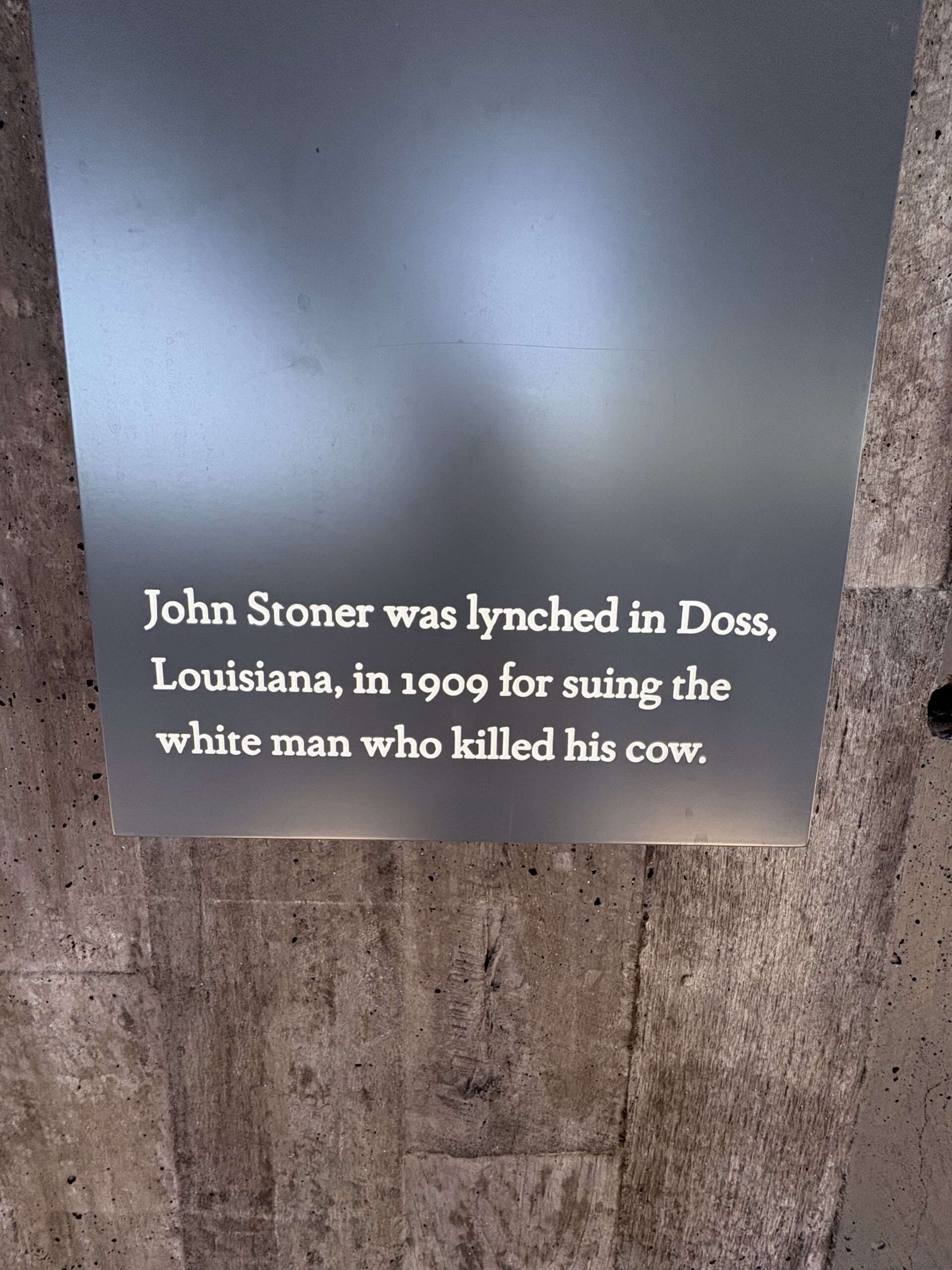
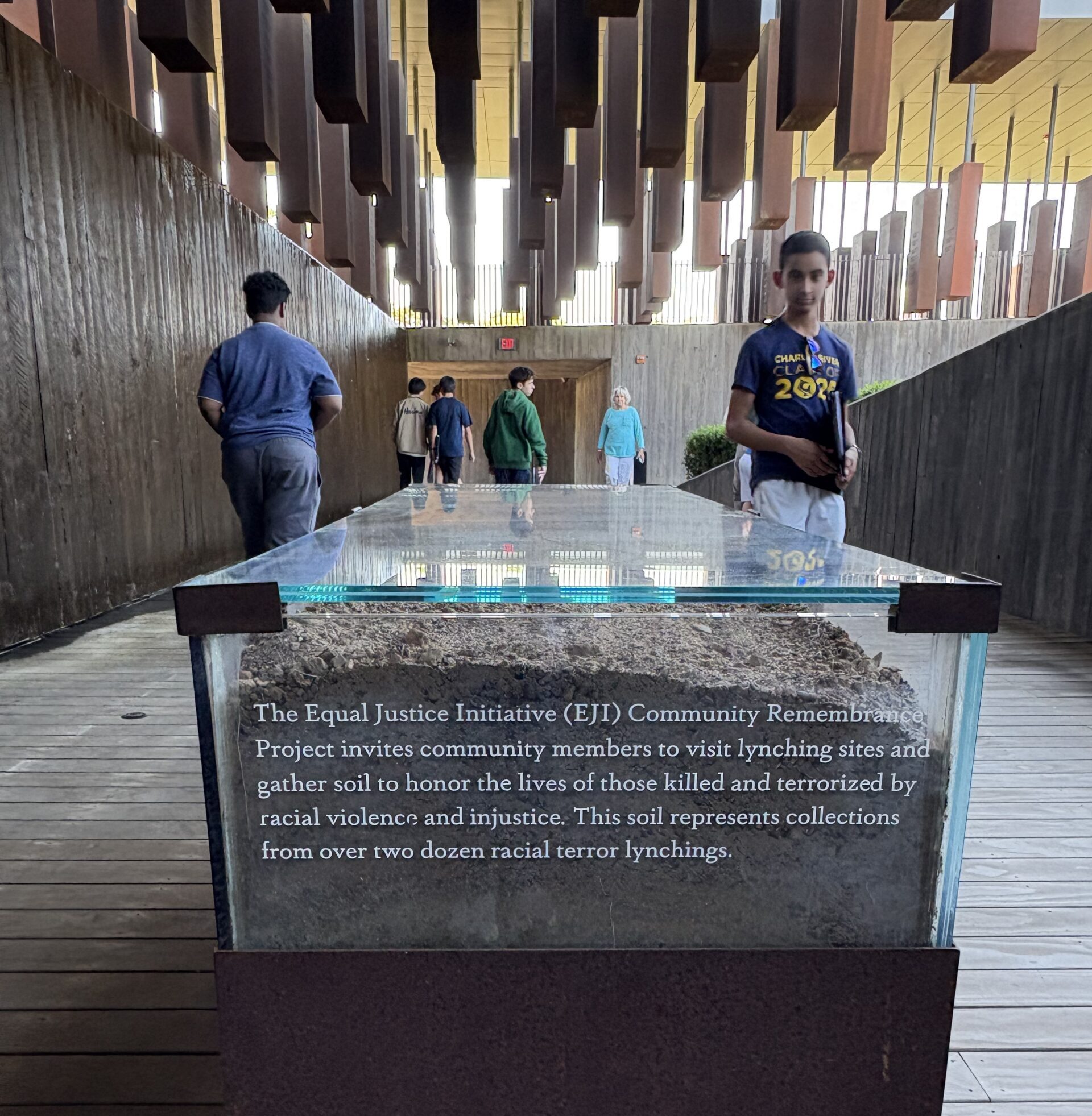
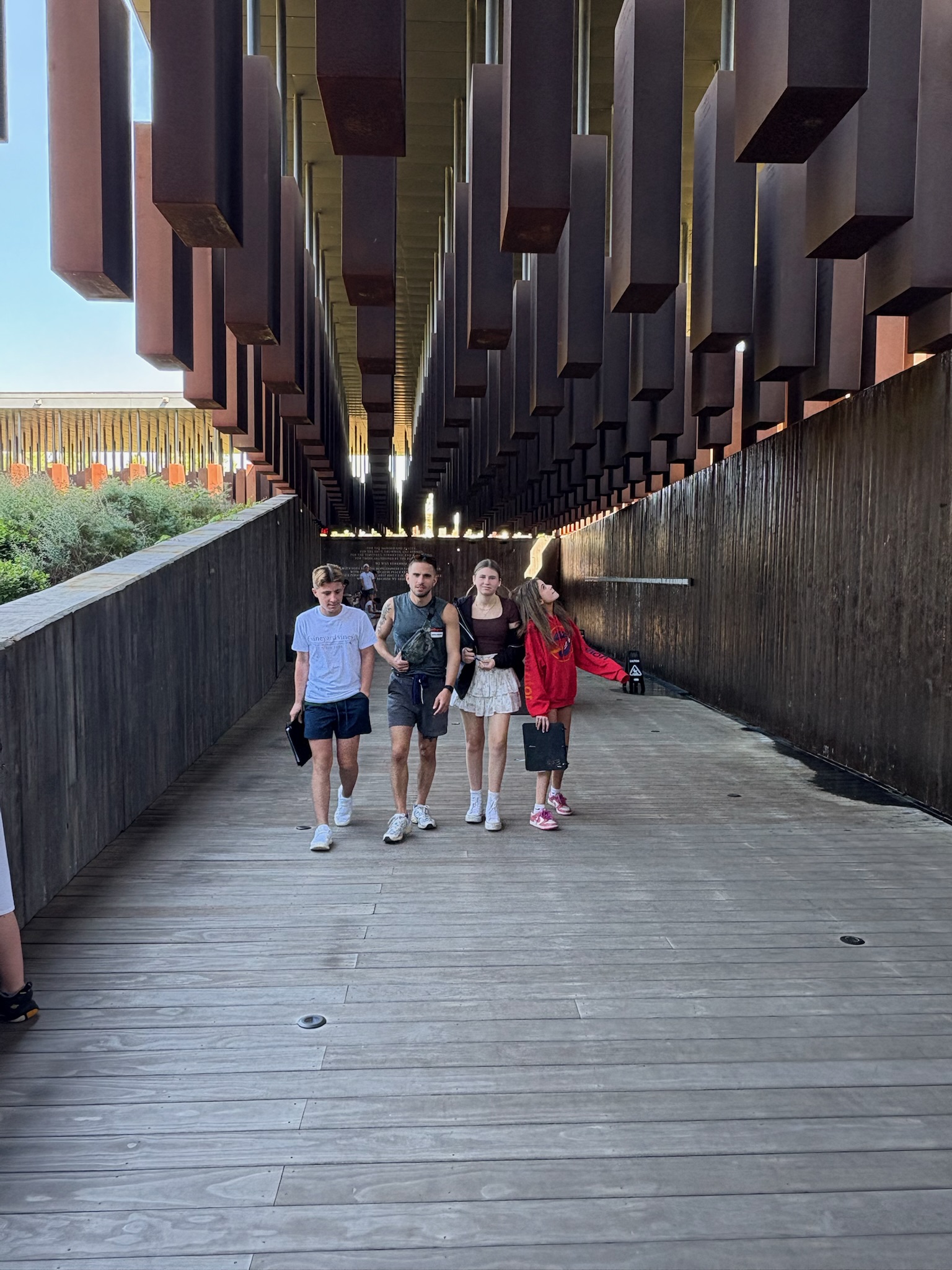
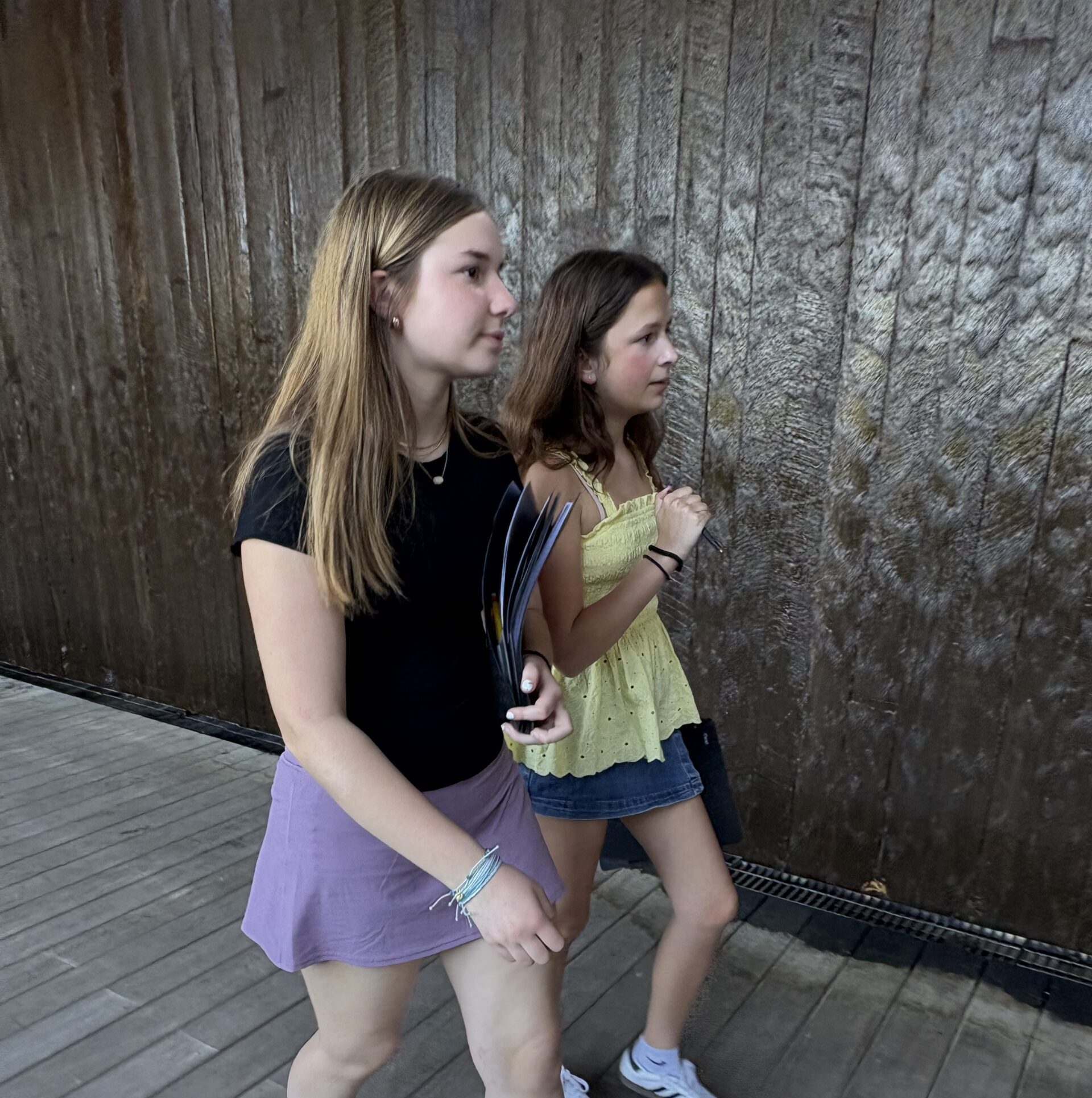
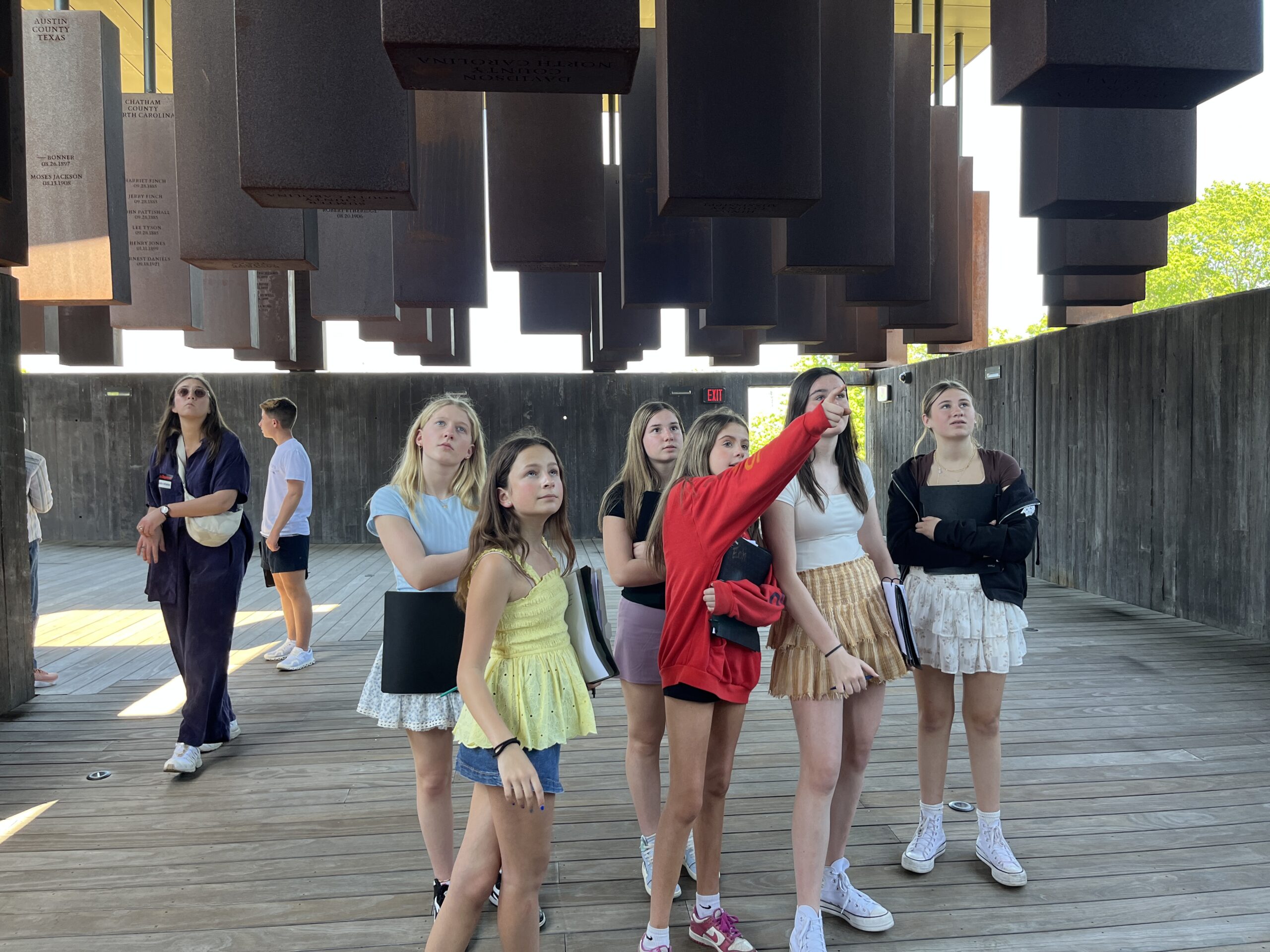

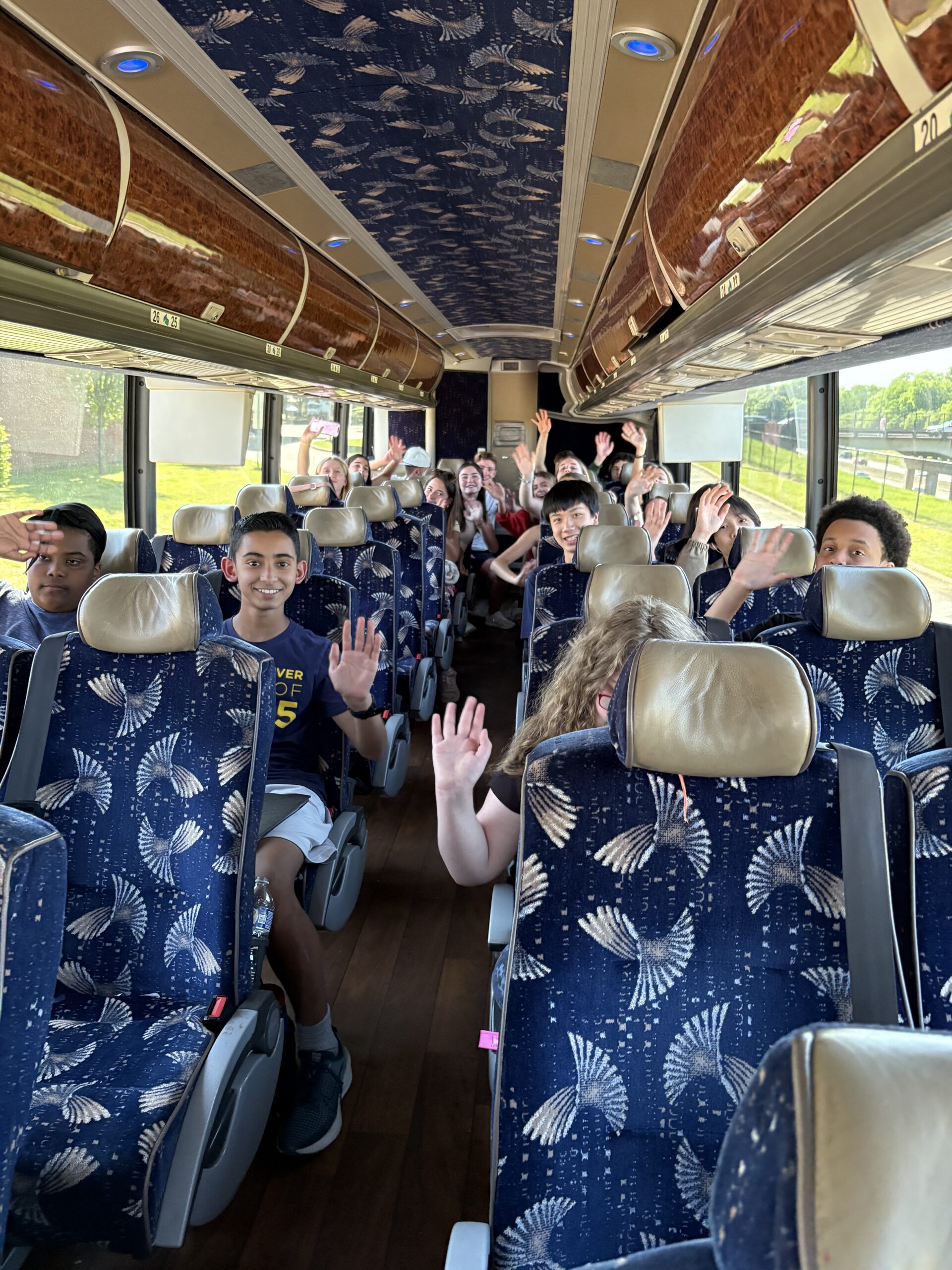
Then, we settled in for a 2.5 hour bus ride back to Atlanta. We spent time on the bus reflecting on what we saw and enjoying some time to rest.

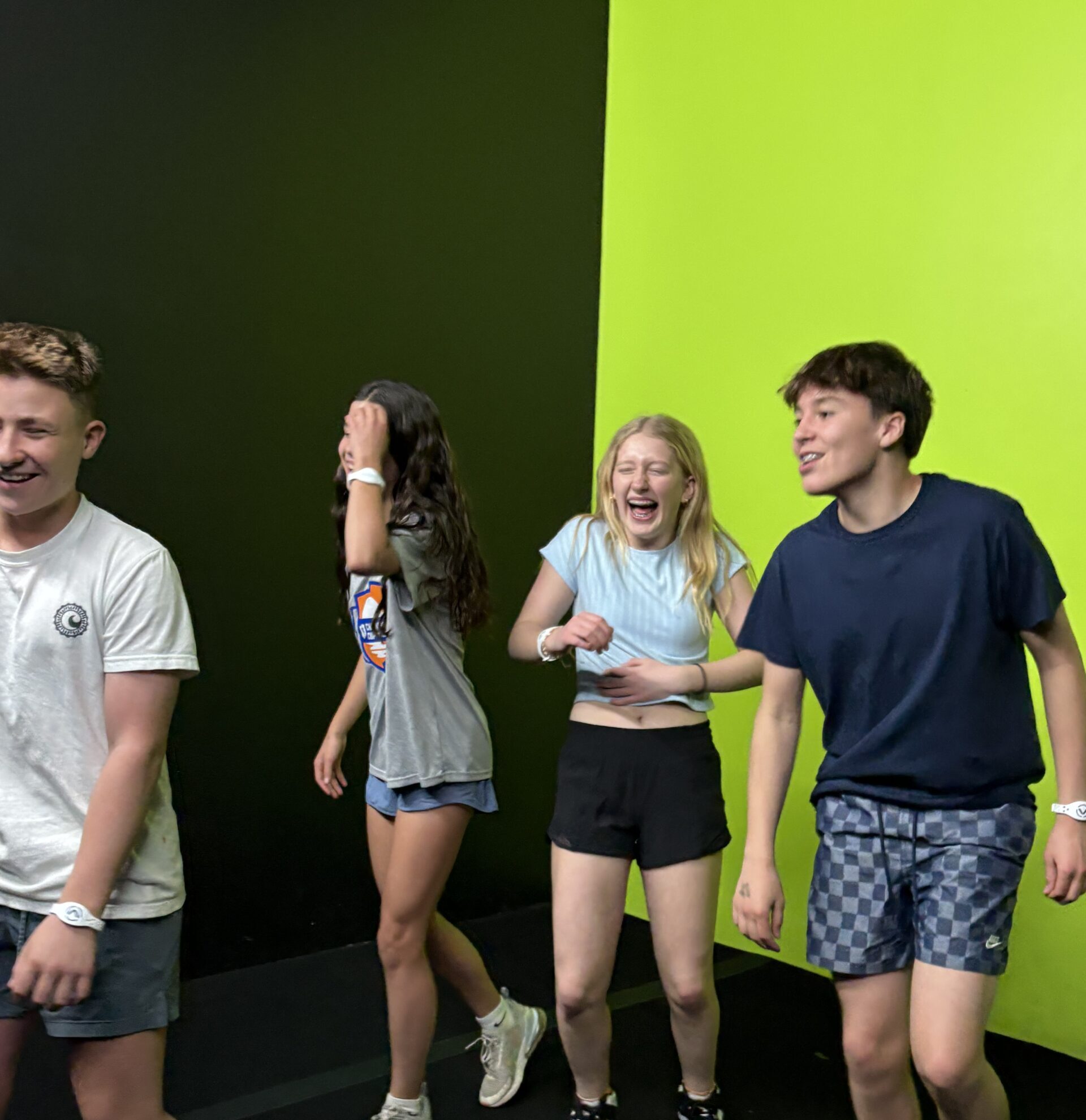
Once we got back, it was time to unwind.
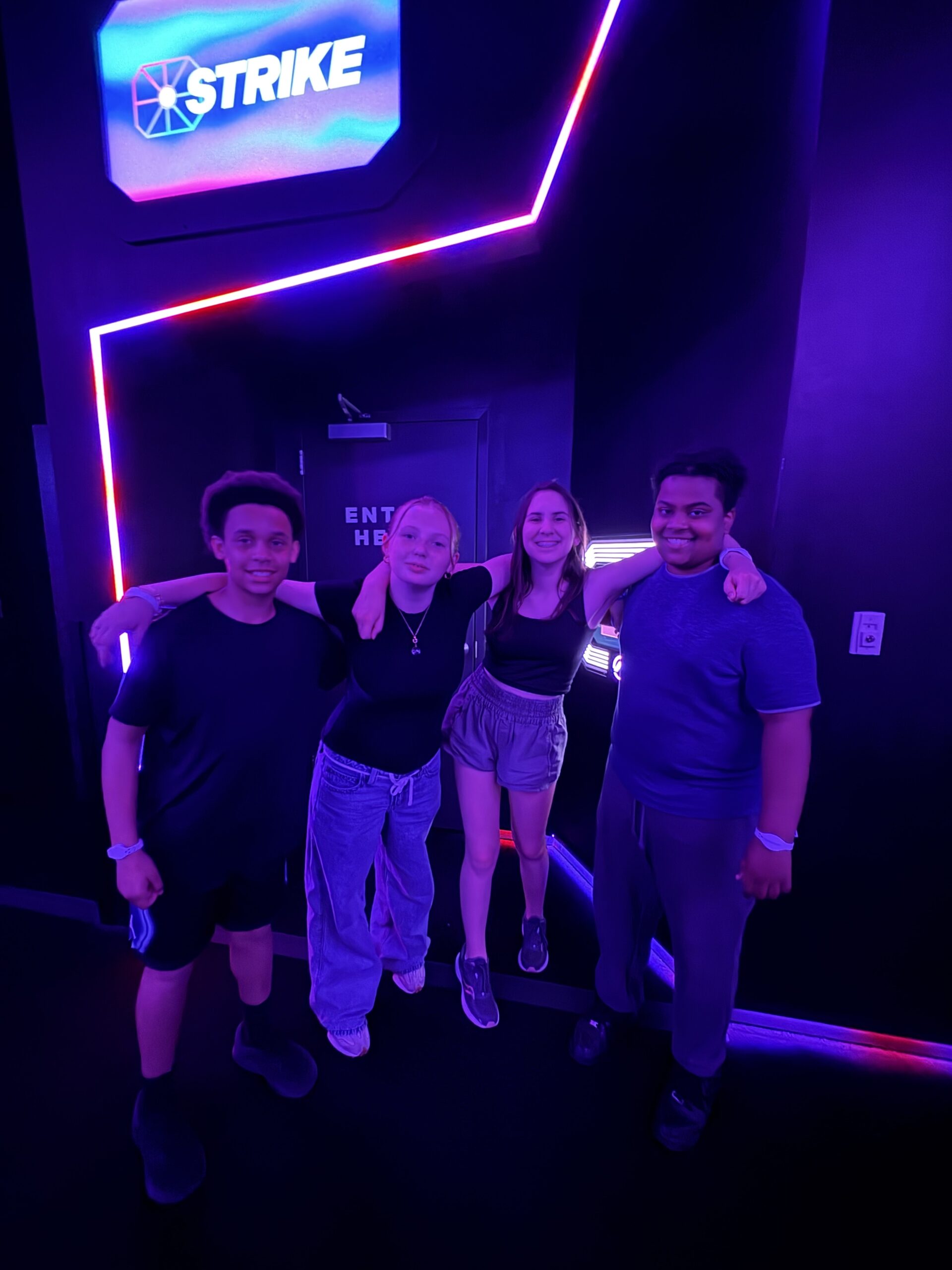
After a day of intense learning, a lighter and interactive activity was just what we needed.
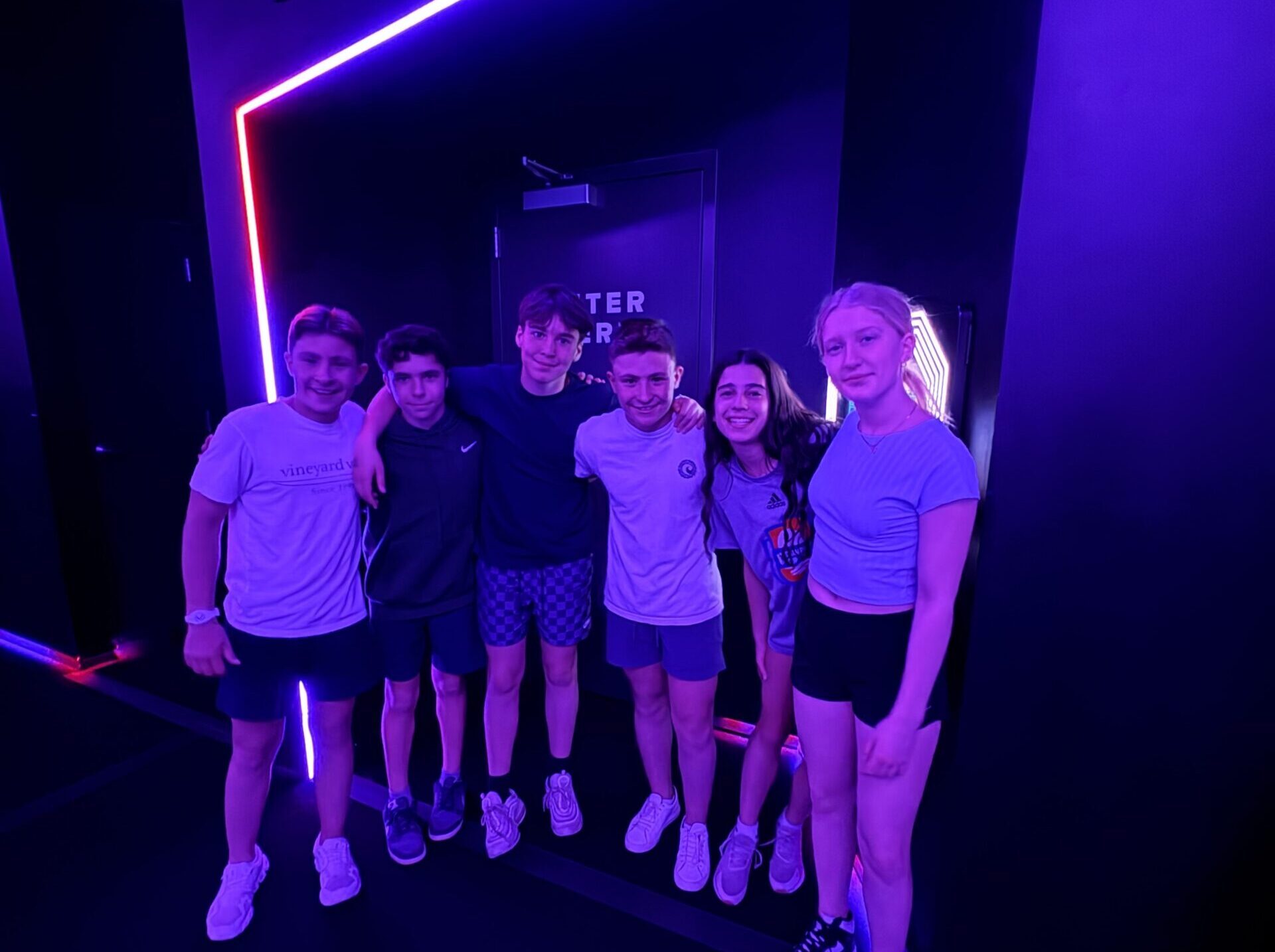
We visited the Activate gaming facility! Students engaged in a fun evening, working together to solve puzzles and play games.
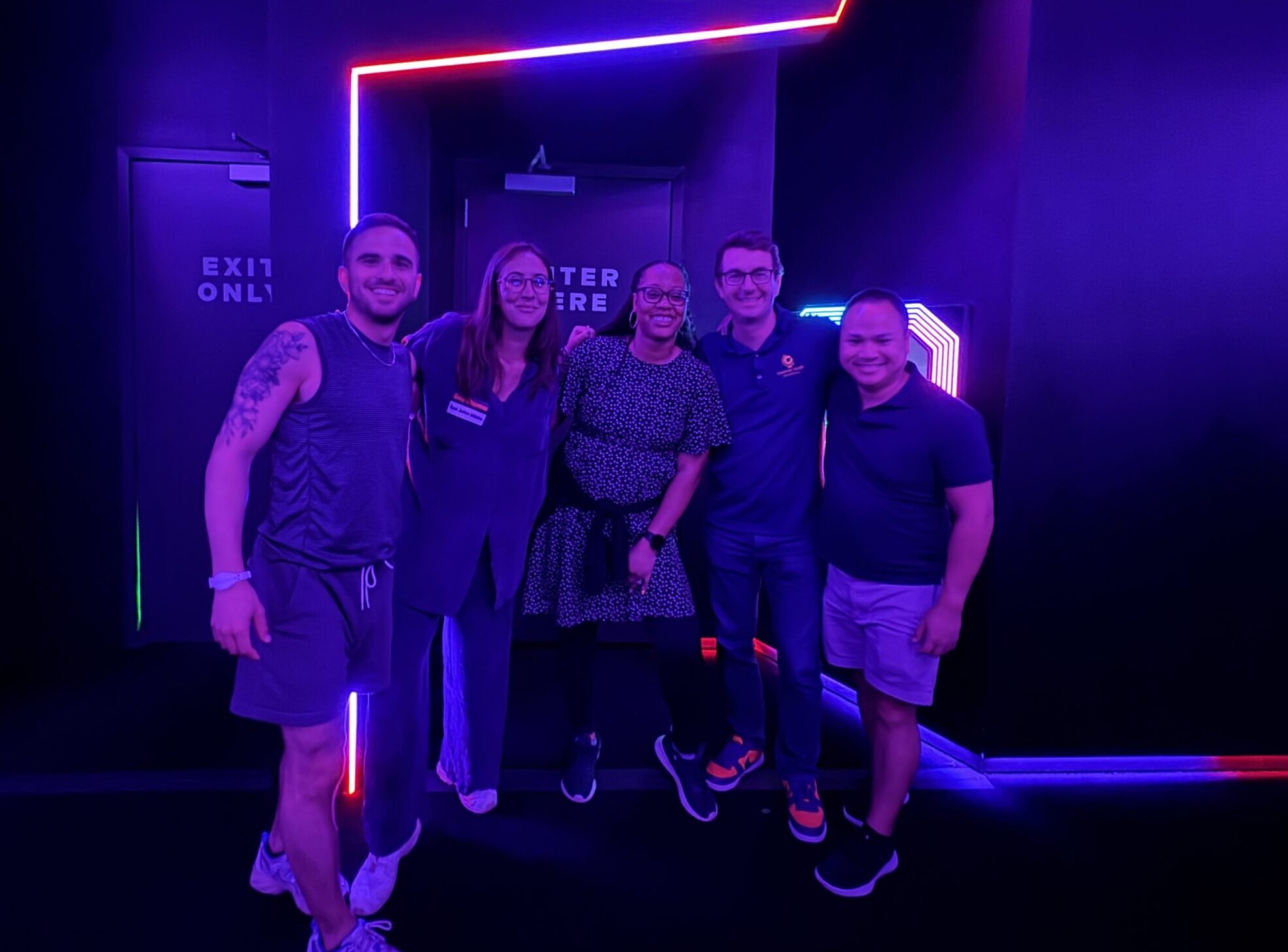
For dinner, we devoured delicious pizza from a Southeast favorite – Mellow Mushroom (beloved by both Sarah Wooten from her time in Georgia and Sarah Clancy from time spent in North Carolina.)
